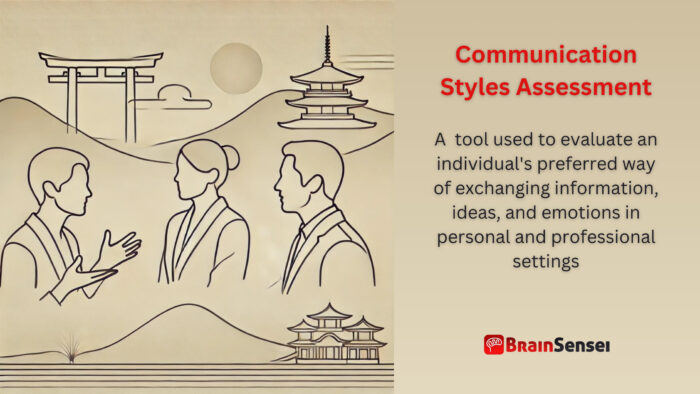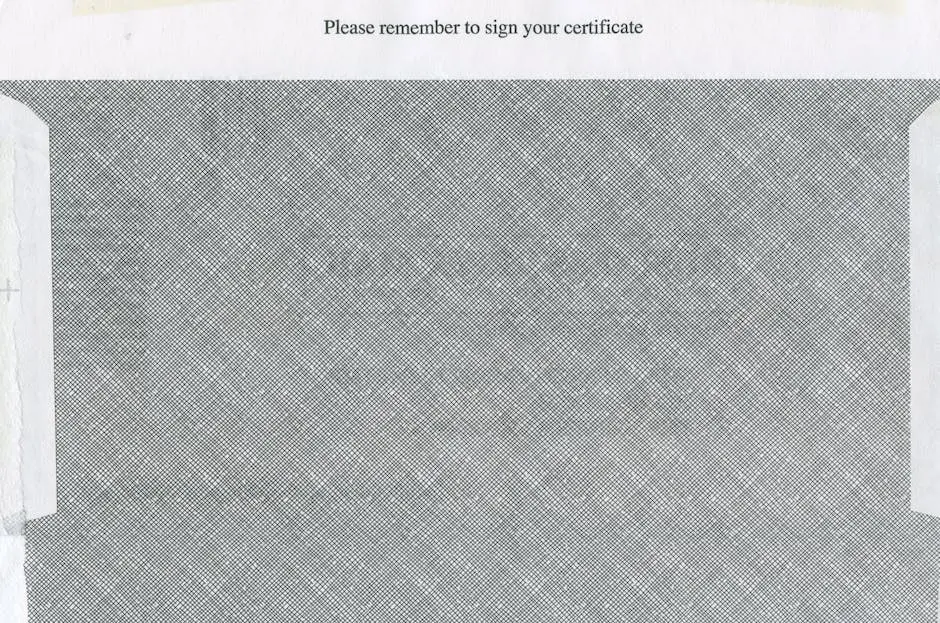
Communication Styles Assessment
What is a Communication Style Assessment?
A communication style assessment is a tool used to evaluate an individual’s preferred way of exchanging information, ideas, and emotions in personal and professional settings. These assessments help individuals and teams understand communication tendencies, improve collaboration, and enhance workplace relationships.
Key Takeaways
- A Communication Styles Assessment identifies an individual’s dominant communication style, such as passive, aggressive, passive-aggressive, or assertive.
- It helps improve self-awareness and interpersonal skills, leading to more effective communication.
- Many assessments categorize communication styles using models such as the DISC Personality Profile, the Myers-Briggs Type Indicator (MBTI), or the Four Communication Styles (Passive, Aggressive, Passive-Aggressive, and Assertive).
- Businesses use these assessments to enhance team dynamics, conflict resolution, and leadership development.
- Understanding communication styles fosters better workplace relationships, reduces misunderstandings, and increases productivity.
Understanding Communication Styles Assessment
How It Works
A Communication Styles Assessment typically involves a series of questions or scenarios that assess how an individual responds to various communication situations. Based on responses, the assessment categorizes their communication style. The results help individuals and teams adapt their approach for more precise, more effective interactions.
Common Communication Styles
- Passive: Avoids conflict, struggles to express opinions, and often prioritizes others’ needs over their own.
- Aggressive: Dominates conversations, interrupts, and prioritizes personal goals over others.
- Passive-Aggressive: Appears passive on the surface but expresses frustration indirectly (e.g., sarcasm, subtle digs).
- Assertive: Balances confidence and respect, communicates clearly and values personal and others’ needs.
Notes
- No single communication style is inherently “right” or “wrong,” but assertive communication is generally the most effective.
- Many assessments incorporate psychological models, such as DISC (Dominance, Influence, Steadiness, Conscientiousness) or MBTI (Introvert vs. Extrovert, Thinking vs. Feeling, etc.).
- Organizations use communication style assessments to build stronger leadership skills and foster a collaborative team environment.
- Results can help tailor communication approaches for diverse work environments or cross-cultural teams.
Related Terms
- DISC Personality Assessment: A behavioural model categorizing individuals into four personality types affecting communication.
- Emotional Intelligence (EQ): The ability to recognize, understand, and manage emotions in communication.
- Conflict Resolution: The process of resolving disputes while considering different communication styles.
- Active Listening: A communication technique that involves fully engaging with the speaker to understand their message.
- Leadership Communication: The ability of leaders to convey messages effectively to teams and stakeholders.
Examples of Communication Styles Assessment in Different Industries
Healthcare Industry
In a hospital setting, communication breakdowns can lead to medical errors, misdiagnoses, and patient safety issues. Healthcare professionals, including doctors, nurses, and administrative staff, must communicate clearly and efficiently to ensure patient well-being. However, differing communication styles can sometimes create misunderstandings, impacting the quality of care.
An extensive hospital system addresses communication breakdowns by having its employees complete a Communication Styles Assessment. The assessment results reveal that many nurses and support staff tend to adopt a passive communication style, often deferring to doctors or senior medical professionals. This deference sometimes results in critical patient information not being conveyed urgently. Conversely, some senior doctors exhibit an aggressive communication style, making junior staff hesitant to speak up about potential medical concerns.
Recognizing these challenges, the hospital implemented an assertive communication training program. The training focuses on helping nurses and junior doctors develop confidence in expressing their concerns while guiding senior doctors to adopt a more collaborative communication style. As a result, hospital staff become more comfortable voicing critical information, reducing the likelihood of errors. After implementing these changes, patient safety improved, and staff reported feeling more empowered in their roles.
Additionally, the hospital integrates active listening techniques into daily briefings, ensuring patient concerns are clearly understood and addressed. The Communication Styles Assessment, training, and process improvements significantly enhance teamwork and patient outcomes.
IT & Software Development
A rapidly growing software development company struggles with project delays and miscommunication between developers, project managers, and clients. The company’s leadership team suspects that different communication styles might contribute to inefficiencies and misunderstandings.
To gain insights, they conduct a Communication Styles Assessment for their employees. The results reveal that software developers tend to favour a direct, data-driven communication style, preferring short, to-the-point discussions with minimal emotional context. On the other hand, project managers and clients favour a more context-rich, explanatory communication style, expecting detailed justifications and broader discussions around project decisions.
This disconnect leads to frustration. Developers feel that lengthy discussions slow progress, while project managers and clients think they are not receiving enough information. The company introduced a communication alignment workshop to bridge the gap, where employees learn to recognize different styles and adjust their approach accordingly.
For instance, developers are encouraged to provide additional context in their updates, while project managers practice asking more concise and structured questions. The company also implements standardized project communication templates, ensuring clarity in emails, progress reports, and meeting notes.
Within six months, the company saw a 25% reduction in project delays, improved client satisfaction scores, and a noticeable decrease in misunderstandings. The Communication Styles Assessment enhances internal efficiency and strengthens client relationships by ensuring clearer, more effective communication.
Sales & Customer Service
A national retail chain experiences issues with its customer service teams. Customer satisfaction surveys indicate that some representatives seem too passive and fail to address customer concerns directly, while others are perceived as too aggressive and make customers feel pressured.
The company conducts a Communication Styles Assessment for all sales and customer service representatives to improve service quality. The assessment reveals that many employees lack assertive communication skills, which is crucial for handling customer complaints and inquiries professionally.
Based on the results, the company implements a customer interaction training program focusing on:
- Developing assertiveness: Employees learn to balance politeness with clear, firm communication.
- Active listening techniques: Representatives practice summarizing customer concerns to ensure understanding.
- Empathy-based responses: Employees learn to acknowledge customer emotions while providing solutions.
The company also introduces role-playing exercises where employees practice handling complex customer interactions using various communication styles. Over time, the employees become more adept at managing customer concerns without being overly passive or aggressive.
As a result, the company observed a 15% increase in customer satisfaction ratings, fewer escalations to management, and improved employee confidence. Additionally, sales representatives report feeling more comfortable engaging with customers, leading to increased sales and customer loyalty.
Education and Training
A university’s faculty and staff often face challenges communicating with students from diverse backgrounds. Some professors use a highly formal and structured communication style, while students, particularly those from different cultural backgrounds, may prefer a more casual and engaging approach.
The university administers a Communication Styles Assessment for faculty members and academic advisors to bridge the gap. The results indicate that some professors unknowingly appear intimidating or unapproachable, making students hesitant to seek clarification or assistance.
In response, the university introduces communication workshops that teach faculty members how to:
- Adapt their communication style based on student needs.
- Use a mix of formal and informal communication depending on the context.
- Encourage open dialogue and student participation.
- Provide feedback in a way that is constructive and supportive.
After implementing these strategies, students report higher satisfaction levels with faculty interactions, and faculty members note improved engagement and participation in their classrooms.
Conclusion: These examples highlight how Communication Style Assessments can be applied in different industries to resolve challenges, improve collaboration, and enhance customer or patient interactions. Recognizing and adapting to different communication styles in healthcare, IT, sales, or education is key to building more effective, high-performing teams.
Use Cases of Communication Styles Assessment
United States (Leadership Development)
A Fortune 500 company in the U.S. integrates Communication Styles Assessments into its leadership training program. Managers learn to adjust their communication styles based on their team’s needs, leading to higher employee engagement and productivity. Using assessment insights, leaders effectively navigate workplace conflicts, foster innovation, and maintain a positive organizational culture.
Germany (Global Team Collaboration)
A multinational corporation in Germany applies Communication Styles Assessments to improve cross-cultural communication among teams in different countries. Understanding style differences reduces miscommunication and creates a more cohesive international workforce. Virtual teams benefit from customized training programs that accommodate diverse communication preferences.
India (Conflict Resolution)
A startup in India struggles with internal conflicts due to varying communication styles. By implementing an assessment, leadership identifies the root cause and introduces training sessions to build a culture of open, assertive communication. Employees report improved collaboration, decreased workplace tensions, and increased job satisfaction.
Conclusion: These examples highlight how Communication Styles Assessments can be applied in different industries to resolve challenges, improve collaboration, and enhance customer or patient interactions. Recognizing and adapting to different communication styles in healthcare, IT, sales, or education is key to building more effective, high-performing teams.
Best Practices for Implementing Communication Styles Assessment
Effective implementation of Communication Styles Assessments requires organizations to go beyond merely identifying communication preferences. Here are best practices to ensure meaningful outcomes:
Foster a Culture of Open Communication
Encouraging employees to discuss their communication styles openly helps create a more inclusive and collaborative work environment.
Provide Regular Training and Reinforcement
One-time assessments are not enough. Regular workshops, refresher courses, and hands-on activities can help employees refine their communication skills continuously.
Tailor Communication Strategies Based on Context
Different workplace scenarios require different communication styles. Teaching employees when to be direct, diplomatic, or empathetic can improve internal and external communication.
Encourage Feedback and Self-Reflection
Employees should regularly reflect on how their communication impacts others and seek constructive feedback from peers and supervisors.
Utilize Assessment Results to Improve Team Dynamics
Managers can use communication assessments to assign roles in projects that align with individuals’ communication strengths, leading to better teamwork and productivity.
Address Communication Gaps Proactively
Leaders should intervene early with targeted coaching or mentorship if assessment results indicate recurring communication issues.
Implement Role-Specific Communication Training
Different roles require different communication styles. Customer-facing employees may need training in empathy and active listening, while engineers may benefit from training in clear technical communication.
Measure the Impact of Communication Training
Organizations should track key performance indicators (KPIs) such as reduced misunderstandings, improved team cohesion, and increased employee engagement to assess the effectiveness of communication training initiatives.
By adopting these best practices, organizations can leverage Communication Styles Assessments to foster a more effective, harmonious, and productive workplace.
Common Mistakes and Issues
One of the organizations’ most common mistakes with Communication Style Assessments is using them without follow-up action. To improve communication, targeted training, coaching, and process changes must follow assessments. When organizations treat these assessments as a one-time activity rather than an ongoing development tool, they fail to see long-term benefits.
Another issue is misinterpreting assessment results. Some employees may feel labelled or boxed into a single communication style rather than understanding that communication is dynamic and adaptable. Framing assessments to build self-awareness and growth rather than a rigid classification system is crucial.
Additionally, ignoring cultural differences in communication can lead to ineffective training. Communication styles vary across cultures, and organizations working with diverse teams must ensure their training and assessment tools are culturally sensitive. What is considered direct and effective in one culture may be perceived as aggressive or rude in another.
Another mistake is overlooking the role of emotional intelligence (EQ) in communication. A strong understanding of emotions, both one’s own and others, is critical in effective communication. Assessments should incorporate elements of EQ training to help individuals manage emotions, build empathy, and navigate conflicts constructively.
Finally, organizations often fail to measure the impact of communication training. It is difficult to determine whether the assessment and training have been practical without tracking improvements in workplace interactions, team efficiency, and conflict resolution. Establishing key performance indicators (KPIs), such as improved employee engagement scores or decreased workplace misunderstandings, helps demonstrate the value of these initiatives.
Addressing these common mistakes and ensuring ongoing development can help organizations maximize the benefits of Communication Styles Assessments and create a more effective and harmonious workplace.
Frequently Asked Questions (FAQs)
What is the best Communication Styles Assessment?
No single “best” assessment exists, but popular ones include the DISC Assessment, MBTI, and Four Communication Styles Model. The best choice depends on your goals and workplace culture.
Can communication styles change over time?
Yes, communication styles can evolve based on personal growth, professional development, and situational factors. Regular reassessment helps track changes.
How do teams benefit from Communication Styles Assessments?
They help improve collaboration, reduce misunderstandings, and enhance leadership development. Teams that understand different styles communicate more effectively.
Are Communication Styles Assessments only for workplaces?
No, they are helpful in personal relationships, education, healthcare, and conflict resolution. Understanding communication styles enhances interactions in various settings.
How can I improve my communication style?
Practice active listening, assertiveness, and adaptability. Training, coaching, and self-awareness exercises can also help.
Additional Resources
- The Magic of Communication Styles: Understanding Yourself And Those Around You
- 4 Communication Styles and How to Navigate Them in the Workplace
- What’s Your Communication Style? Take the Quiz and Find Out
- How to Use Communication Styles to Drive Project Success
Preparing for a PMI certification?
- Exam Prep Courses: PMP®, CAPM®, and PMI-ACP®
- Exam Simulators: PMP®, CAPM®, PMI-ACP®, PMI-PBA®, PMI-RMP®, PMI-SP®, PgMP®, and PfMP®
- Professional Development Units (PDUs): 15, 30, and 60 PDU Bundles



